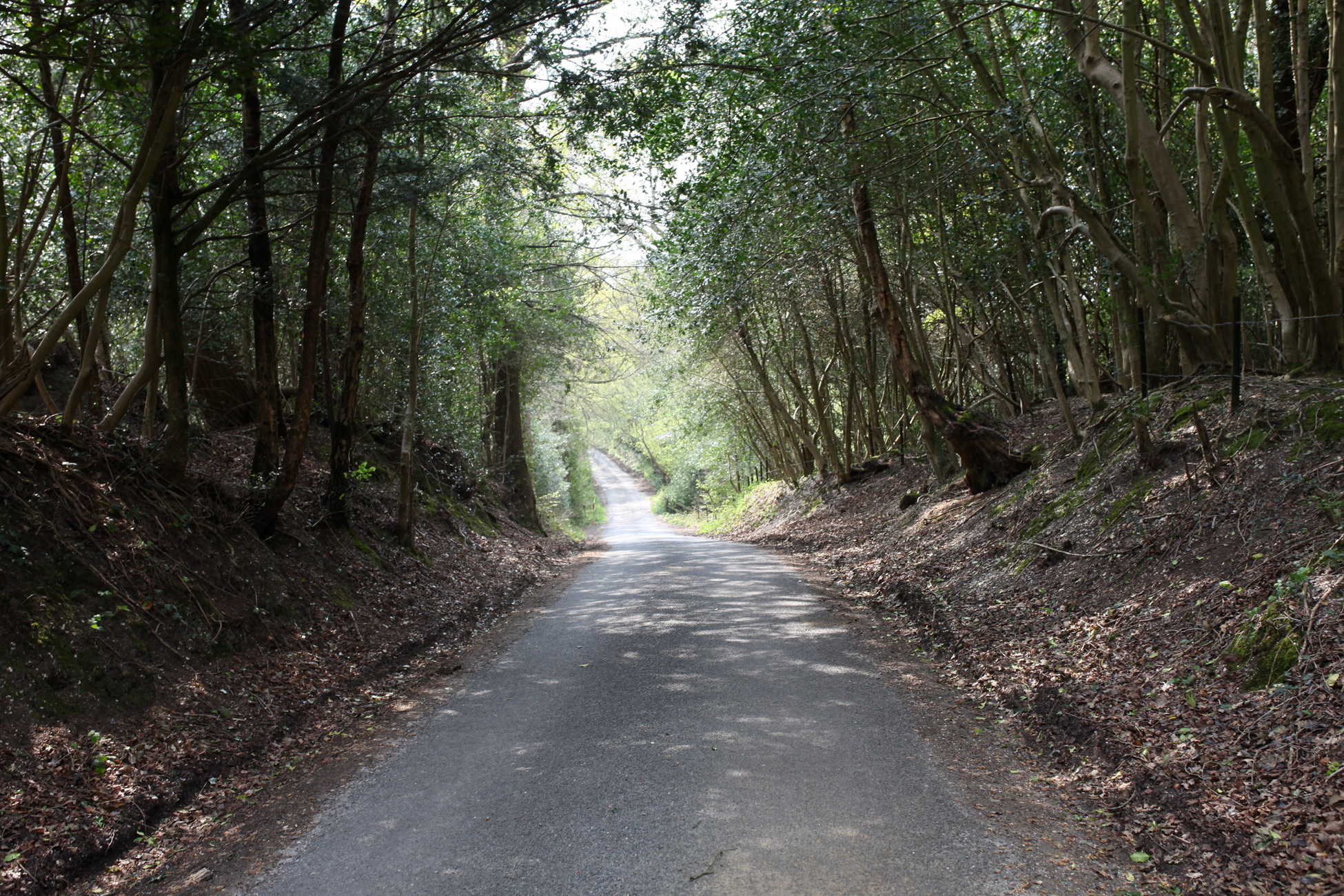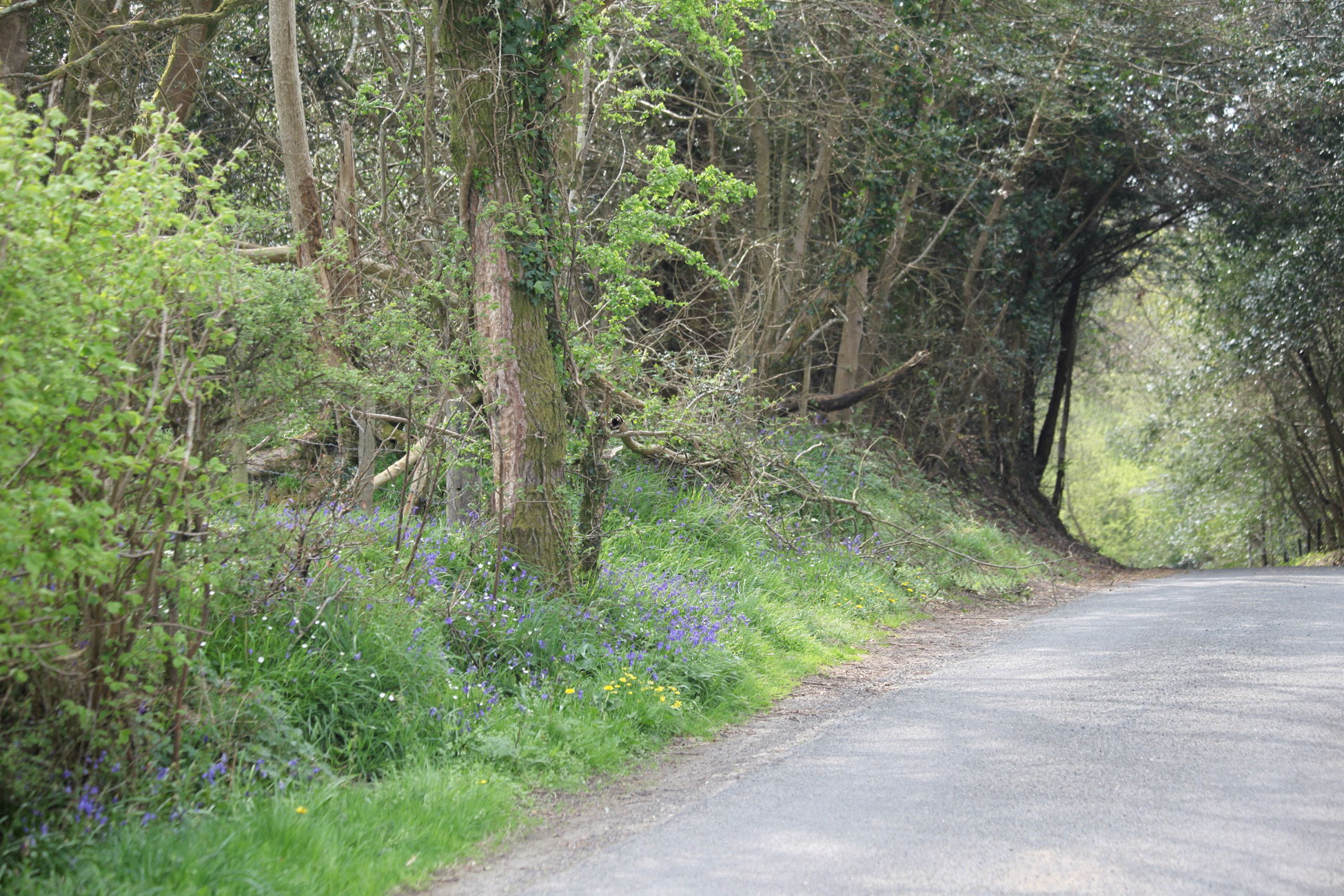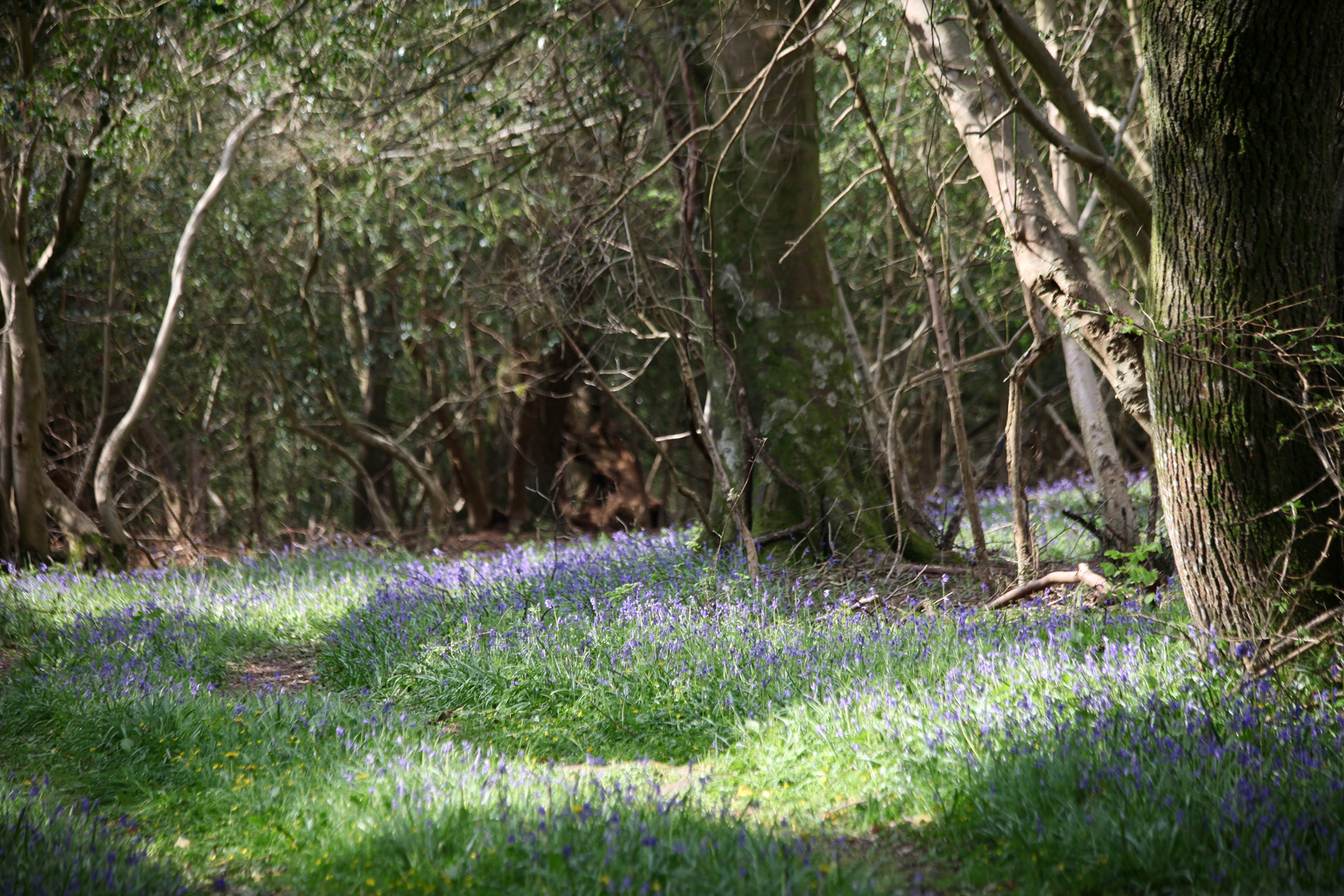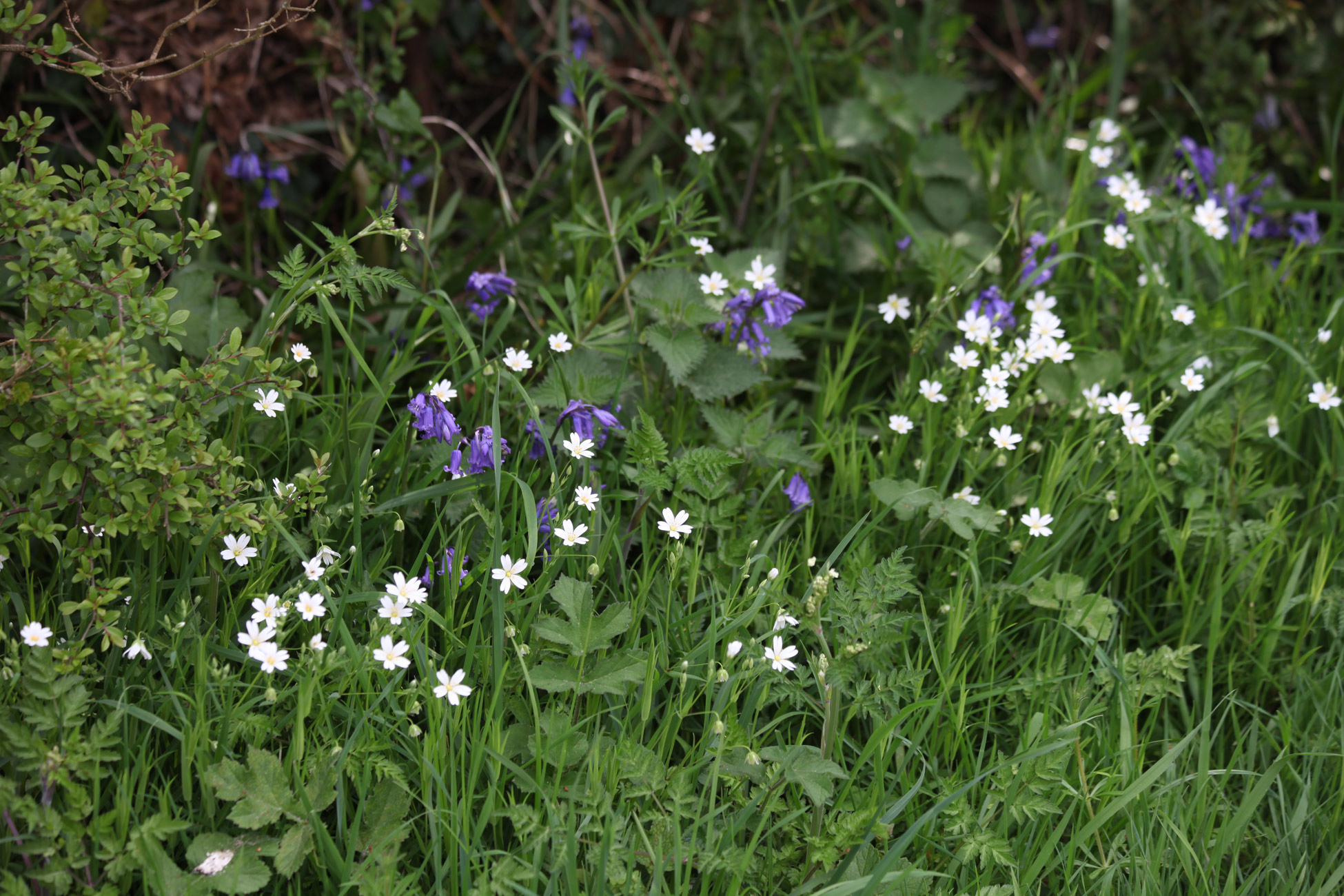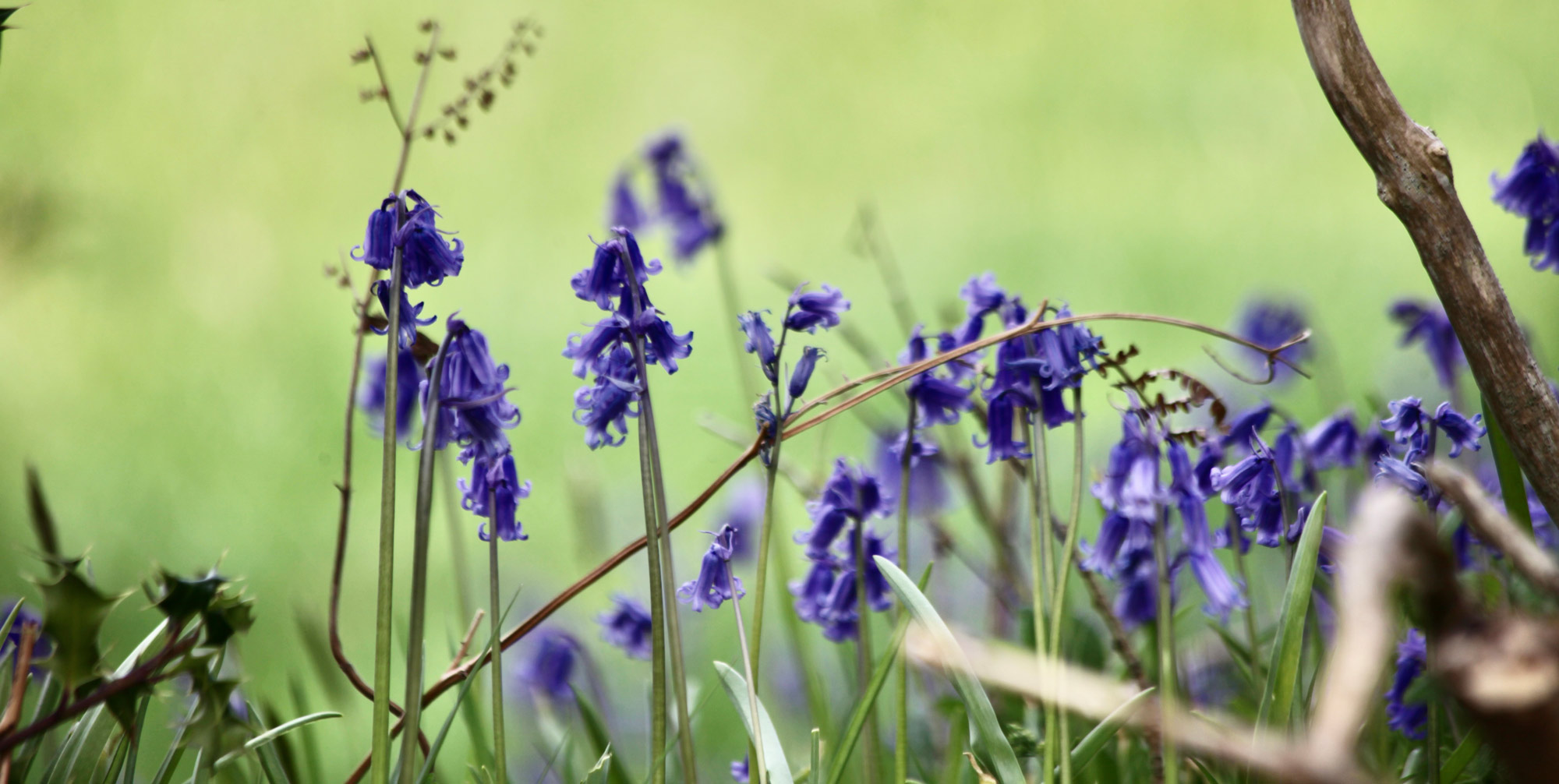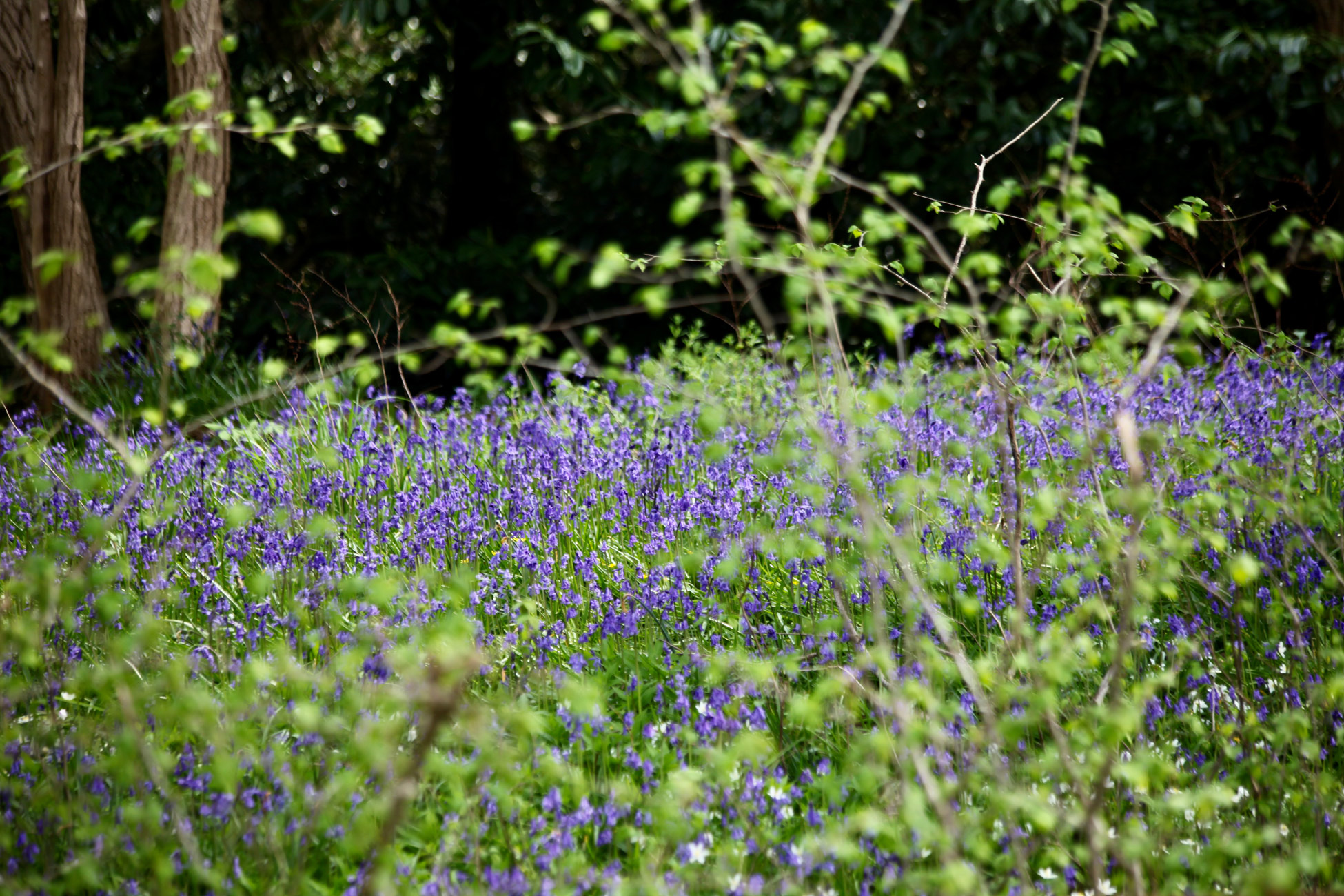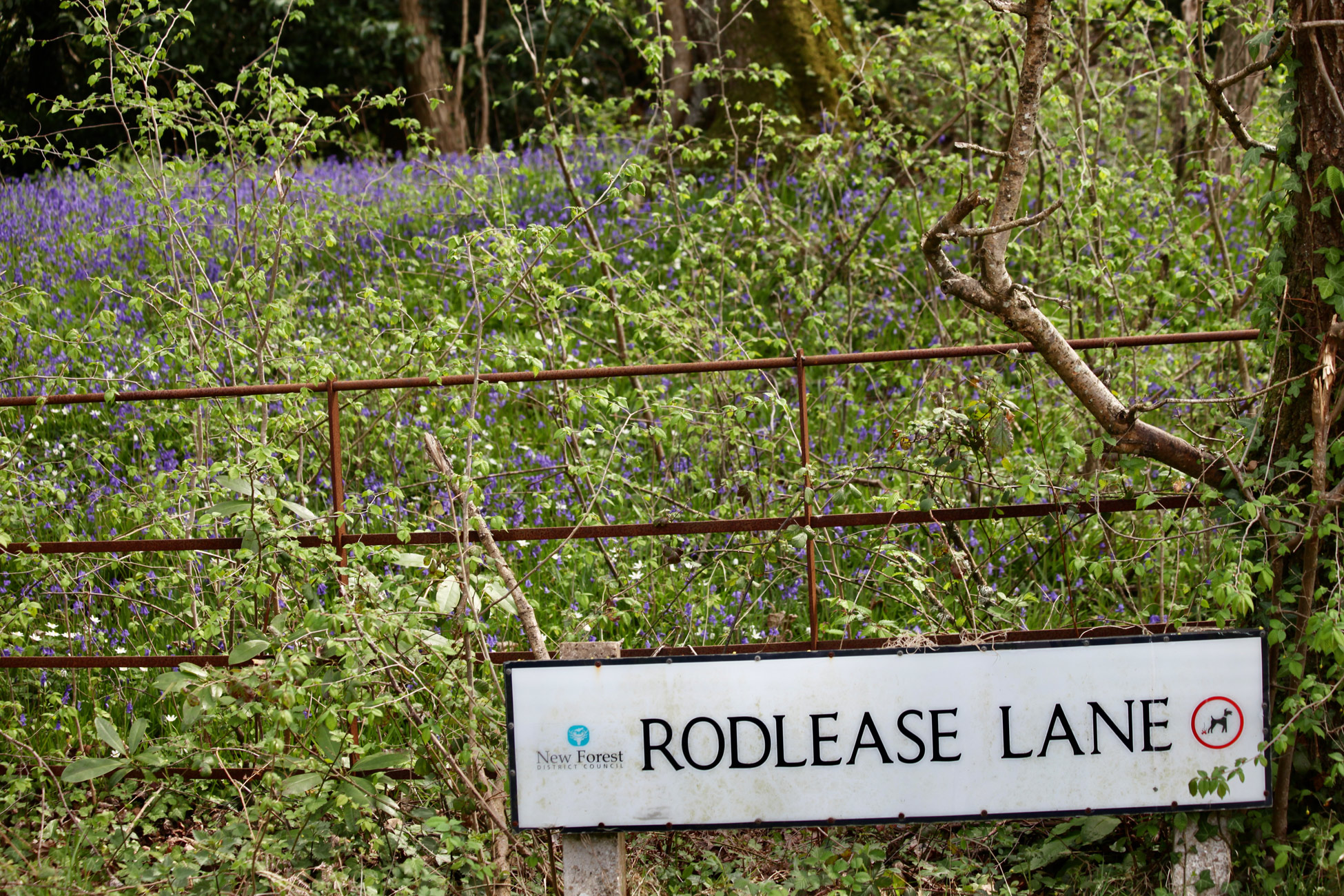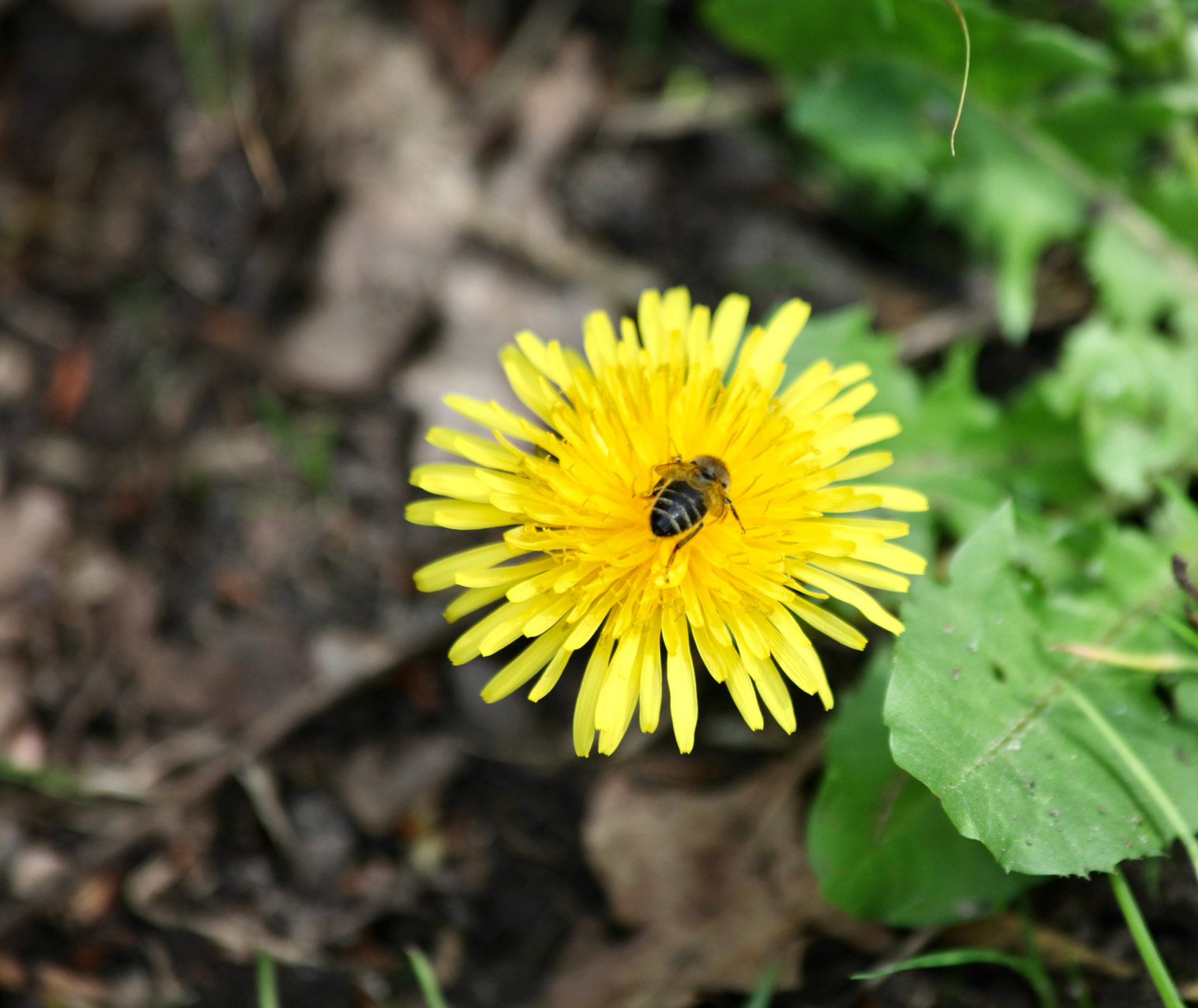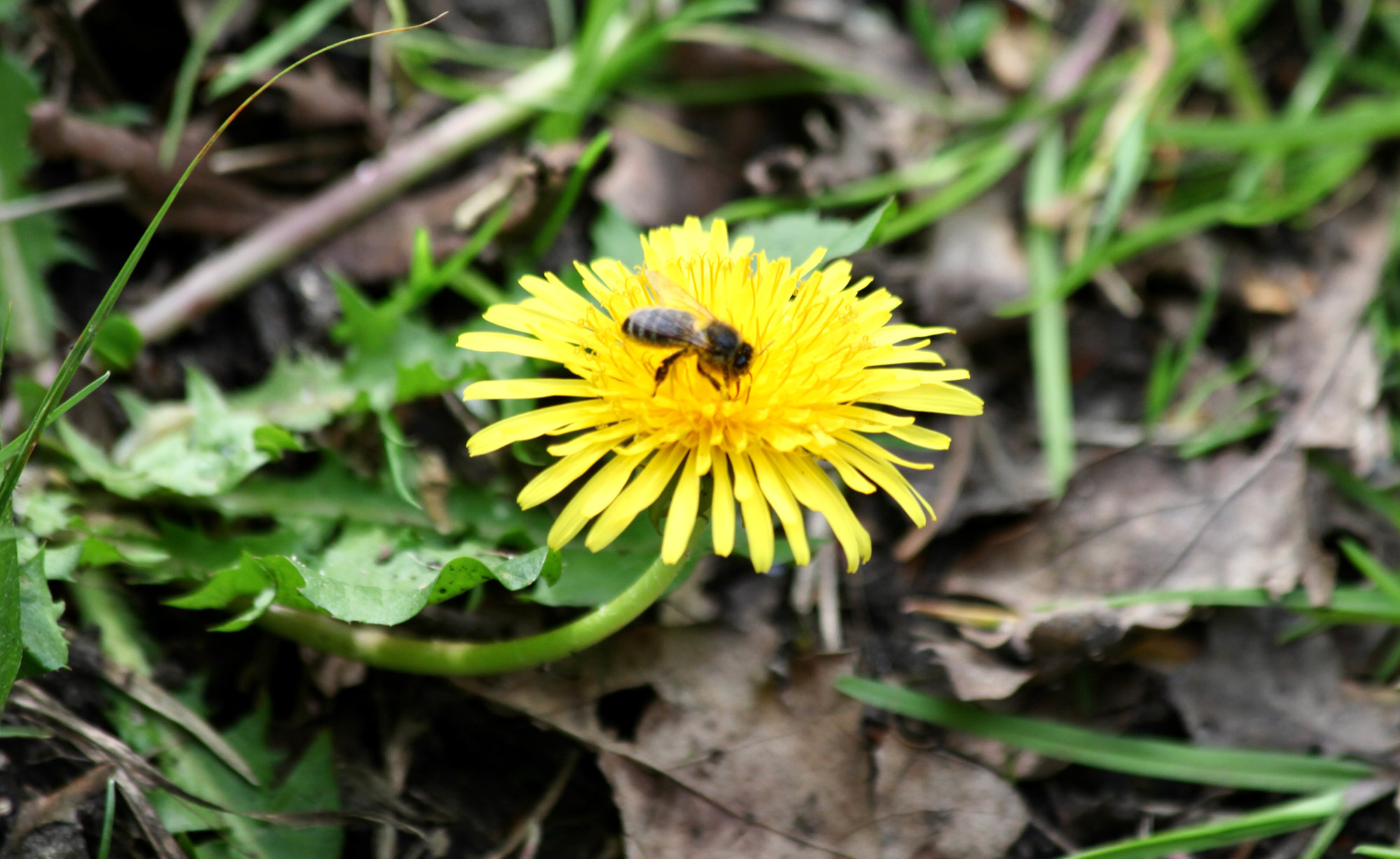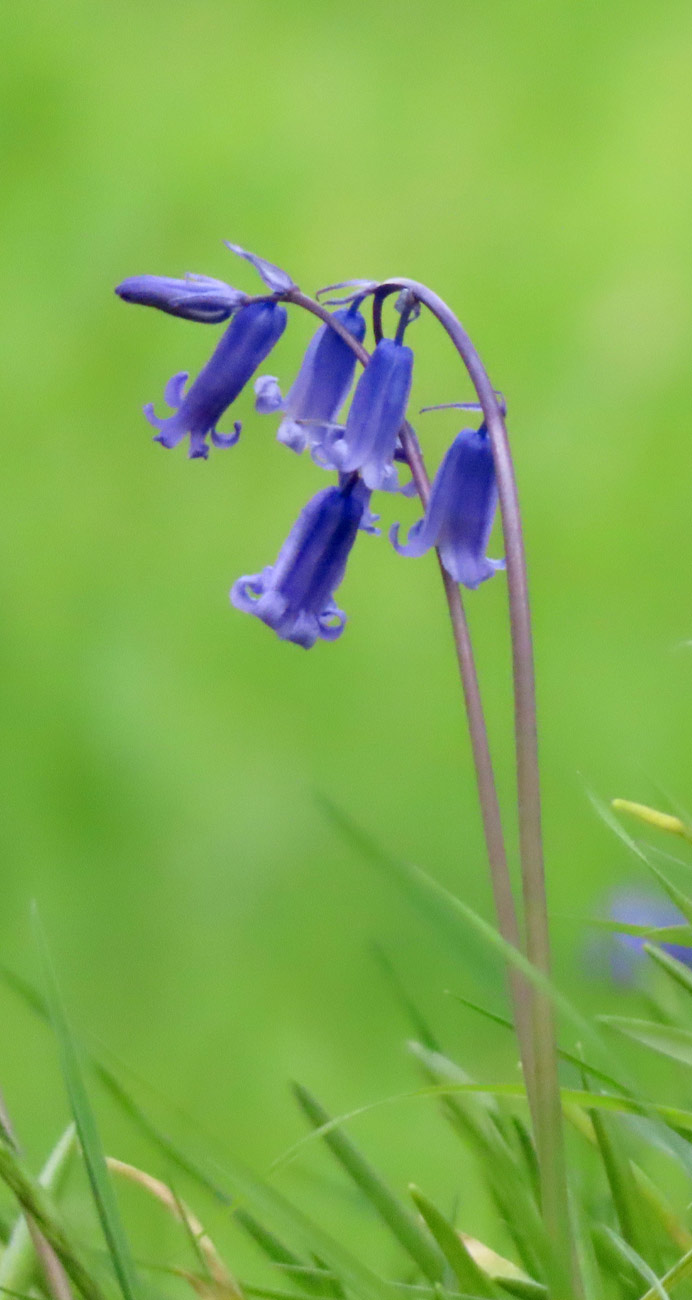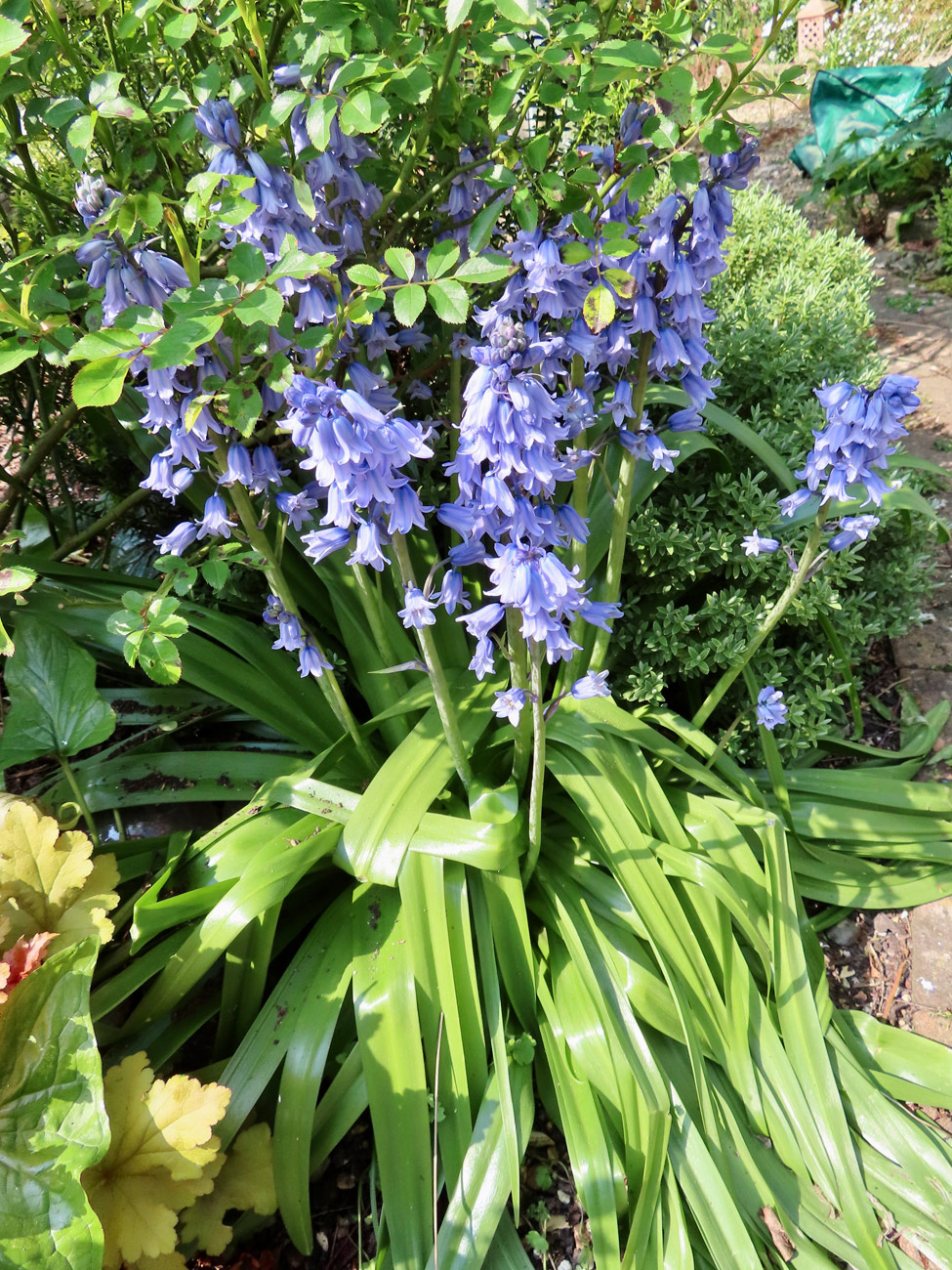This morning I watched the recording of the final match of this year’s Women’s Six Nations rugby tournament – certainly a fitting contest to bring up the end of the series.
Later I posted https://derrickjknight.com/2023/04/30/droll-tales-29/
and converted from Classic to Block edit, recategorising as Garden
after which, we drove out to Church Lane to visit

our favourite English bluebell wood which must have been producing descendants of the original plants for centuries.
The ancient verges and banks flanking the road sport swathes of the blooms, mingling with such as stitchwort, ferns, and sticky willies, dandelions, and even a solitary mushroom.
I exchanged greetings with a cyclist on the tarmac and enjoyed a longer conversation with the family walking towards me. Naturally we exchanged information about babies in slings.
On Rodlease Lane two women and a dog anxiously peered in both directions seeking safety while taking their alpacas for a walk.
Gilpins, on Undershore Road, is an eighteenth century house in private ownership, so I am not sure about the age of the beautiful brick wall offering a backcloth for seasonal primroses.
This evening we all dined on roasted chicken thighs; creamy mashed, and boiled new, potatoes; crunchy carrots; firm broccoli, and tasty gravy, with which I finished the Shiraz.

















